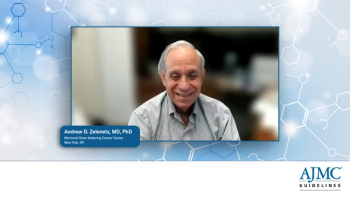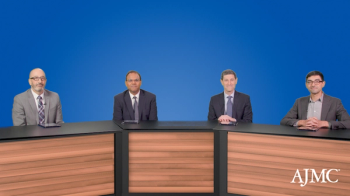
TPS Improves PAH Functional Outcomes in a Pediatric Population
The study investigators wanted more data on long-term outcomes in pediatric patients following implantation of a transcatheter Potts shunt (TPS) for treatment of severe pulmonary arterial hypertension (PAH).
Despite instances of clinical worsening and malfunctioning devices, pediatric patients who have severe
The single-center retrospective study comprised a long-term survival and procedural outcomes analysis of 13 patients (53.8% were male patients; median [IQR] age, 8.7 [5.7-12.0] years; median weight, 26.8 [18.0-34.7] kg) living with severe PAH who had a TPS implanted between 2009 and 2018. Follow-ups took place at 1, 3, 6, and 12 months after TPS intervention and yearly thereafter.
“Debates on the long-term outcomes remain unsolved,” the study authors wrote. “The international Potts shunt registry recently underscored that TPS was a risk factor for early mortality. The data of this registry also showed that the type of shunt, and in particular transcatheter shunts, did not prove a significant risk factor for late events.”
Among the study cohort, 7 patients had a history of endovascular stenting of probe/patent arterial ducts and 6 patients had undergone aorta-to-pulmonary radiofrequency perforation and covered stent placement. Their median follow-up was 77.4 (70.7-113.4) months.
Short-term survival saw 100% of patients alive at 1 year following TPS insertion, and although it dropped slightly, long-term survival at 6 years was 92.3%; 1 patient dies 28.5 months post procedure from a severe respiratory syncytial virus infection. In addition, compared with their baseline visit, the patients in the study cohort had significant clinical improvements at discharge (P < .001); these also remained high at the final study visit (P < .05).
When analyzing changes in disease markers that could indicate condition improvement or worsening, the study investigators only saw significant improvements in functional class (P < .001). Positive changes were not seen in tricuspid annular plane systolic excursion (TAPSE), 6-minute walk distance z-scores, and N-terminal-pro hormone brain natriuretic peptide, nor did PAH medication levels change.
Stent reintervention was necessary in 23% of the study participants at the 1-year mark and 79% by the 6-year mark. Further, among the 9 patients who required stent reintervention, this occurred at a median 25 (9.5-56) months following initial TPS placement. Additional treatments were balloon dilation in 53.8% and restenting in 46.2%.
Fifty-four percent of patients required high-pressure post dilation of their implanted stents because of incomplete stent expansion or residual pressure gradient and having a history of this was linked to higher rates of reinterventions (P = .021). By the end of the study period, 46.2% had signs of stent malfunction, and 2 had been listed for heart-lung transplant.
All of the children included in this study underwent a detailed investigation of their medical history, underwent repetitive preoperative detailed clinical and echocardiographic evaluations, and as-needed supportive therapy that included diuretics, oral anticoagulation, and oxygen.
The authors analysis also produced the following:
- Median time from PAH diagnosis to TPS procedure: 2.5 (1.4-5.8) years
- Asthenia and stunted growth were seen in all children at study entrance, and all caught up to normal growth curves by the final follow-up
- Triplet therapy was the most common regimen (54%) at TPS implantation, with doublet therapy a distant second (23%)
- Most stents (92.3%) were stainless steel and had an open-cell design (92.3%)
- Median stent diameter was 7 (7-8.5) mm
- Median final angiographic diameter was 8(6.7-8.7) mm
At discharge, 92.3% of the children had World Health Organization (WHO) functional class I (3 patients) or II (9 patients) disease—1 patient had class III disease—compared with 69.2% who had WHO functional class III or IV disease at study entrance.
With their positive findings, the study authors also acknowledged that pediatric patients present anatomical challenges to stent implantation—that present higher risk of malfunctioning events— during the TPS procedure, writing, “Stent malfunctioning was expected as frequently reported in other interventions implicating endovascular stent implantations.”
Future studies, they concluded, should investigate 3 important questions:
- Is there a learning curve impact?
- Should the TPS shunt procedure be abandoned?
- Is there room for improvement and innovation?
Reference
Haddad RN, Levy M, Szezepanski I, Malekzadeh-Milani S, Bonnet D. Long-term outcomes of transcatheter Potts shunt in children with suprasystemic pulmonary arterial hypertension. Front Cardiovasc Med. Published online October 26, 2022. doi:10.3389/fcvm.2022.1028304
Newsletter
Stay ahead of policy, cost, and value—subscribe to AJMC for expert insights at the intersection of clinical care and health economics.











































